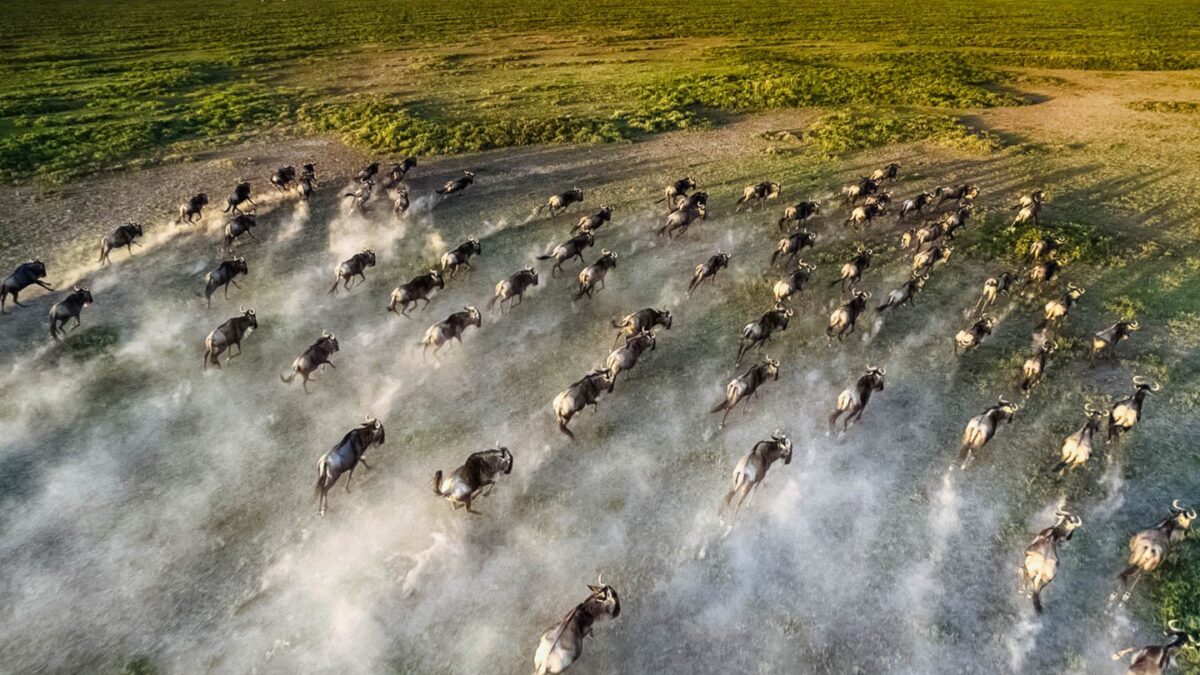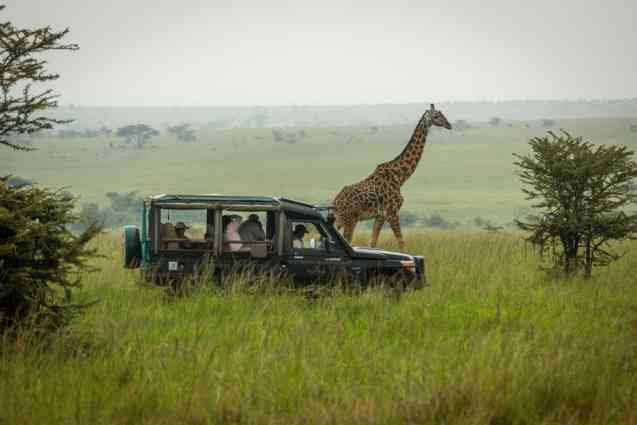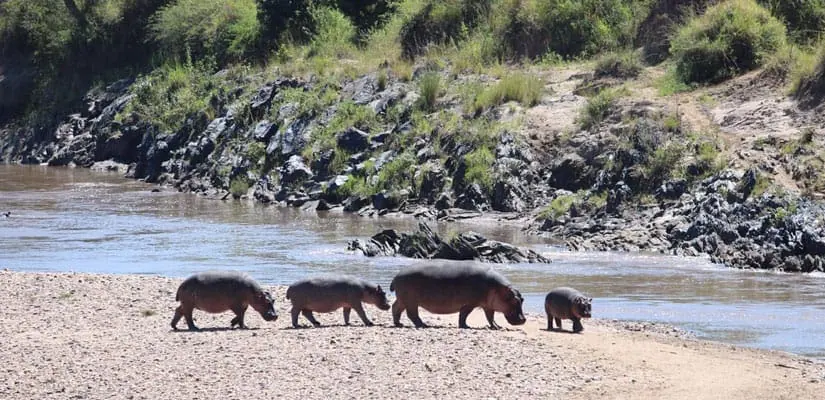- GET IN TOUCH WITH US:
- +256 753518160
- +256 777842166
- info@experiyatourcompany.com

What’s the best region for scenic landscapes?
November 19, 2025
Can I take a hot air balloon ride over Amboseli?
November 19, 2025How Do I Photograph the Great Migration?
Photographing the Great Migration is one of the most extraordinary opportunities a wildlife photographer can ever experience. Every year, over 1.5 million wildebeest, hundreds of thousands of zebras, and countless gazelles move across the vast savannahs of the Serengeti–Maasai Mara ecosystem in a dramatic cycle driven by rainfall and grazing patterns. The result is a spectacle of movement, survival, and raw natural beauty. For photographers, this migration offers endless scenes—thundering herds, chaotic river crossings, dramatic predator interactions, dust-filled sunsets, tender moments between mothers and calves, and sweeping landscapes that tell the story of life on the African plains.
But capturing this spectacle requires more than just showing up with a camera. Photographers must understand timing, positioning, lighting, animal behavior, and the practical aspects of shooting in the wild. This comprehensive guide explains exactly how to photograph the Great Migration—from choosing the right season and location to mastering technique in the field. If photographing the Migration is on your bucket list, this detailed guide will prepare you for one of the most thrilling photographic adventures you will ever undertake.
Understanding the Great Migration Before Photographing It
Before even lifting your camera, you need to understand the rhythm of the Migration. The movement of millions of animals is not random—it follows seasonal rains and the resulting growth of fresh grass. This natural phenomenon plays out across two countries: Tanzania’s Serengeti National Park and Kenya’s Maasai Mara National Reserve.
January–March: Calving Season in the Southern Serengeti
Hundreds of thousands of wildebeest give birth within a few weeks in the Ndutu region. Photographers can capture intimate scenes of newborn calves, mothers nursing, predators hunting, and vast herds spread across open plains.
June–July: Grumeti River Crossings
As the herds move north, they cross the Grumeti River in the western Serengeti. These crossings are less chaotic than the Mara crossings but offer fantastic photo opportunities of crocodile encounters and cohesive herd movement.
July–October: Mara River Crossings in Kenya
This is the most famous phase. Wildebeest gather in massive numbers before plunging into the Mara River, leaping from steep banks, battling currents, and dodging predators. This spectacle is chaotic, dramatic, and iconic for photographers.
November–December: Southern Return
After the rains begin in the south again, the herds begin their journey back to the Serengeti, offering sweeping landscape shots of long lines of animals moving across green plains.
Understanding these phases helps you choose when and where to position yourself for the best photographic opportunities.
The Best Locations to Photograph the Great Migration
Maasai Mara River Crossings
The Mara River is the heart of Migration photography. The riverbanks at Lookout Hill, Double Cross, and the Main Crossing Point offer excellent vantage points. Photographers can capture wildebeest launching off cliffs, crocodiles ambushing from below, and dramatic scenes framed by dust and sunlight.
Serengeti’s Western Corridor
This area offers wide-open spaces perfect for photographing large herds on the move. The Grumeti River crossings here provide unique angles of wildebeest leaping over shallow channels or drinking cautiously at crocodile-filled waters.
Ndutu Plains during Calving Season
If you prefer intimate wildlife photography, Ndutu offers exceptional access to predators such as lions, leopards, and cheetahs as they hunt among newborn herds. Soft February light makes this an exceptional time for photography.
Mara Triangle and Conservancies
Private conservancies like Mara North, Olare Motorogi, and the Mara Triangle offer fewer crowds, better light angles, and off-road access, all of which significantly enhance photographic opportunities.
Choosing the Right Equipment for Migration Photography
Camera Body
A DSLR or mirrorless camera with fast autofocus, high ISO performance, and fast burst shooting is ideal. Capturing leaping wildebeest or predator chases requires quick response time.
Lenses
A versatile combination ensures you don’t miss a moment:
A telephoto lens (100–400mm or 200–600mm) for close-ups of animals
A prime telephoto (300mm or 400mm) for crisp action shots
A wide-angle lens (24–70mm or 16–35mm) for dramatic landscape scenes
A fast portrait lens (85mm or 135mm) for unique storytelling shots
Supports and Accessories
A beanbag for stabilizing heavy lenses
Lens cleaning kits for dust management
Extra batteries and large memory cards
Polarizing filters for managing glare
Back-up camera body if possible
Dust, heat, and movement all test your gear—so preparation matters.
The Art of Photographing River Crossings
River crossings are the Migration’s pinnacle. They are unpredictable, fast, chaotic, and visually explosive—making them both exhilarating and challenging for photographers.
Patience is Essential
You may wait for hours, sometimes the whole day, for a crossing. The herd often gathers at the riverbank, approaches, retreats, stares, and scatters repeatedly. The moment they finally cross is sudden and intense.
Position Yourself Wisely
Choose a location that gives you both visibility and safety. Some banks offer high angles for sweeping herd shots; others give you low angles for dramatic leaping photographs.
Keep Shutter Speed High
To freeze movement:
Use 1/1250–1/2000 seconds for leaping animals
Increase ISO if necessary
Shoot in burst mode to capture sequences
Capture the Emotion and Chaos
Focus on dust clouds, splashing water, expressions of fear or determination, and the dynamic shapes created by the herd. These small details add emotion to the overall composition.
Include the Environment
Wide shots showing the river, the cliffs, and the line of wildebeest stretching into the distance create powerful storytelling images.
 Photographing Predators During the Migration
Photographing Predators During the Migration
The Migration fuels intense predator activity, especially in the Maasai Mara. Lions hunt in groups, cheetahs chase young calves, crocodiles guard crossing points, and leopards stalk through riverine forests.
To capture predator action:
Understand Behavior
Learn to anticipate hunts by observing:
Stalking posture
Alert ears
Tense body language
Movements of the herd
Maintain Ethical Distance
Never pressure animals into action. Ethical photography respects wildlife boundaries.
Use Continuous Autofocus
Predators move fast—use AF-C or continuous tracking to maintain sharp focus.
Freeze Action or Embrace Motion
Freeze a cheetah sprint with fast shutter speeds or experiment with panning to create artistic motion blur.
Capturing Scenic Shots of the Migration
Beyond action, the Migration offers exquisite opportunities for storytelling landscapes:
Lines of animals stretching into the horizon
Sunrise silhouettes of wildebeest horns
Dust rising behind marching herds
Storm clouds gathering over grasslands
Golden backlighting at sunset
Using wide-angle lenses allows you to convey the scale of the event.
Play with Light
Backlighting can turn dust into golden haze. Side lighting enhances textures on animals and grass. Early morning and late afternoon are ideal for softer light.
Incorporate Foreground Elements
Acacia trees, termite mounds, riverbanks, and rocky outcrops add depth to your compositions.
How to Prepare for a Migration Photography Safari
Choose the Right Time
For river crossings, visit July–October.
For calving season, visit January–March.
For large herd movement scenes, visit April, June, or November.
Hire a Photography-Focused Guide
Guides knowledgeable in photography know exactly where to position the vehicle, how to predict behavior, and how to maximize lighting conditions.
Book a Private Vehicle
A dedicated vehicle ensures:
You control positioning
You get both sides for shooting
You can stay longer at sightings
You won’t disturb others needing bathroom breaks
Practice Before You Go
Familiarize yourself with your camera’s controls so you can adjust settings quickly under pressure.
The Emotional Experience Behind the Camera
Photographing the Great Migration is more than a technical endeavor—it is an emotional journey. As herds rumble past your vehicle, the earth vibrates beneath your feet. As you watch a mother guide her newborn across a dangerous river, your lens becomes a witness to nature’s most powerful stories. As lions chase across the plains, your heartbeat matches the rhythm of the hunt.
Many photographers describe the Migration as transformative. It reconnects you with nature, challenges your skill, and leaves you with memories and images that last a lifetime.
Book Your Great Migration Photography Safari with Experiya Tour Company
For a seamless, expert-led photography safari, book your Migration experience with Experiya Tour Company. Their safari guides understand photography deeply, positioning you for the best angles, light, and sightings. They offer private photo vehicles, flexible itineraries, and access to prime locations across the Maasai Mara and Serengeti ecosystem. Experiya ensures that your photographic journey is not just successful but truly unforgettable.




